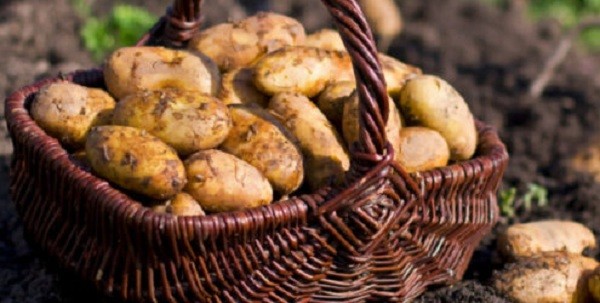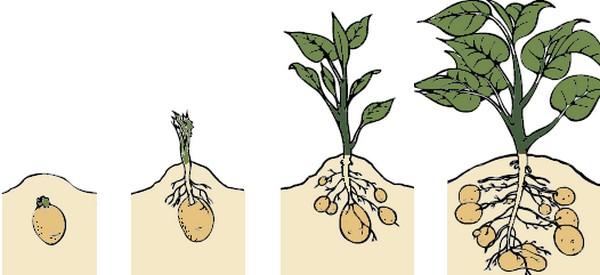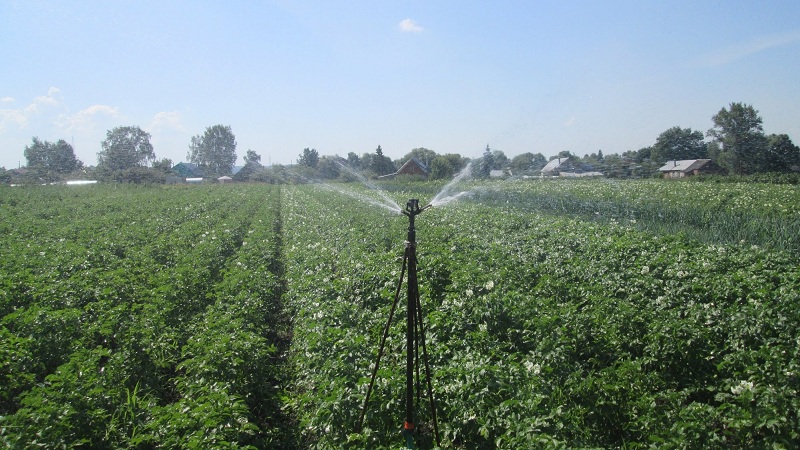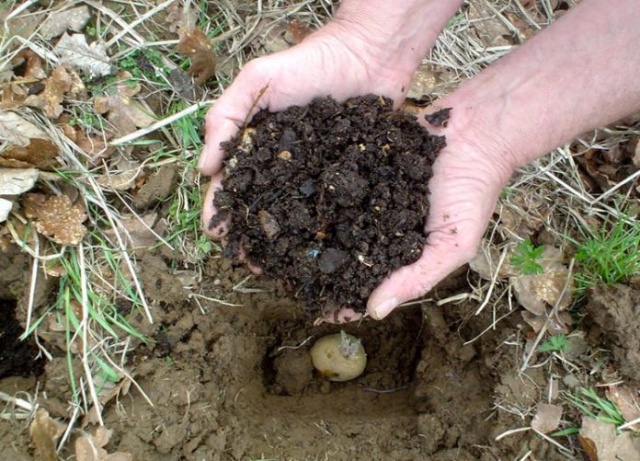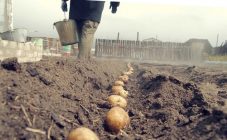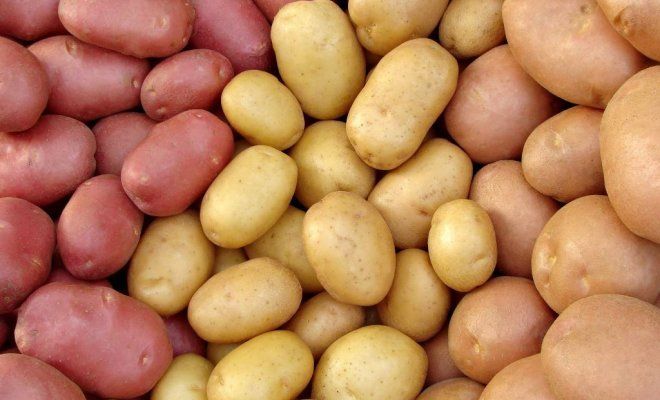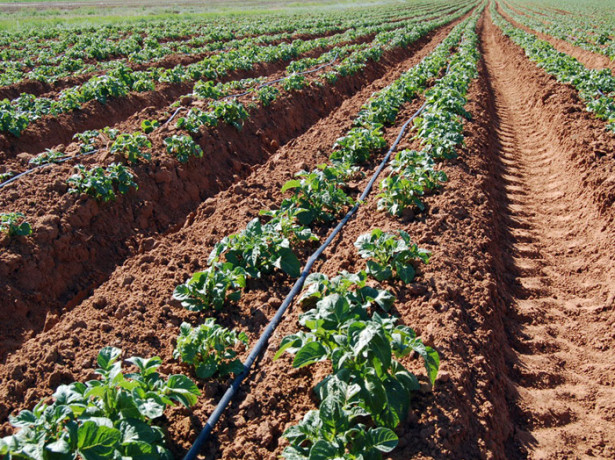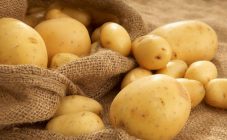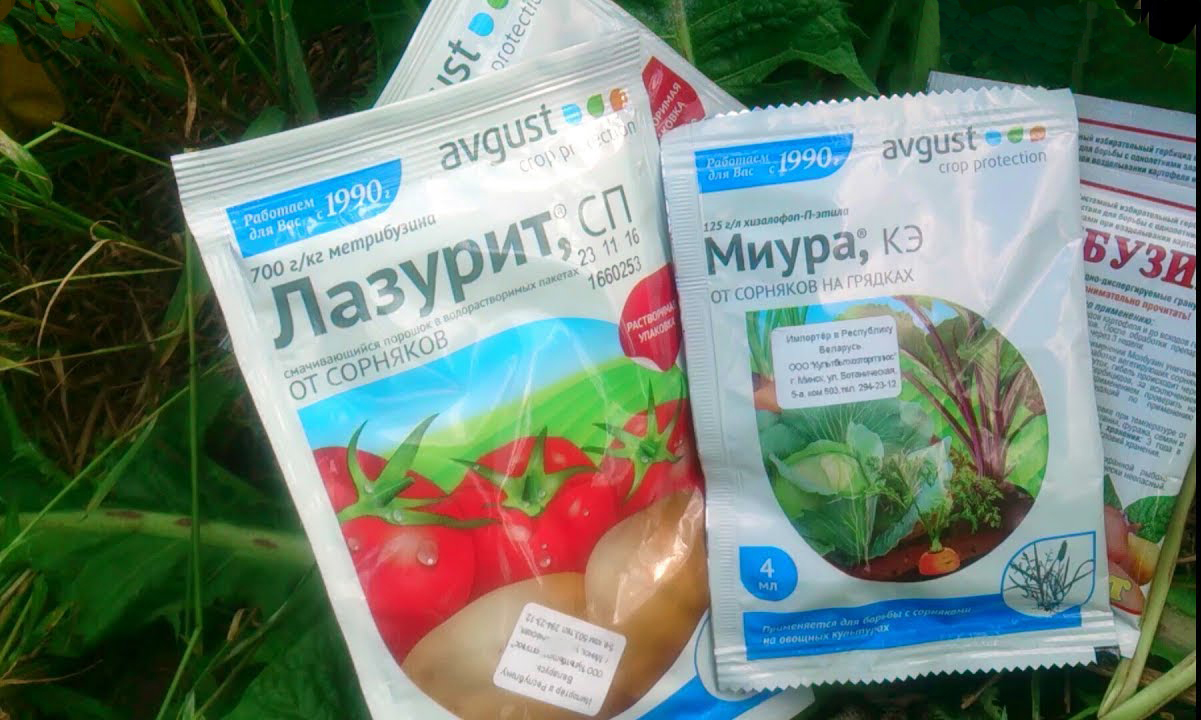Content:
Everyone in Russia loves potatoes. It is an unpretentious plant that can give a good harvest in any strip of the country. Potatoes can be used to make countless nutritious meals, both casual and festive. It contains potassium and phosphorus, which have a positive effect on blood pressure. Many people plant potatoes in their garden plots so that they do not spend money on store-bought vegetables grown in dubious conditions during the year. There is an opinion that it is possible to get a high yield of potatoes, having at your disposal huge areas for growing, and vegetable gardens in private sectors of large cities and summer cottages are usually not large in size. But a small area is not really a problem, and it is also possible to improve yields on it, you just need to know some subtleties.
Increased yield
Basic landing rules
Most summer residents plant potatoes every year according to the same algorithm, to which they have become accustomed for many years, without thinking that it may be wrong, and continuing their thoughts on how to get a good potato harvest.
Preparatory procedures
First, they deal with the land. In the fall, you need to decide where the potatoes will grow next year. A flat, sun-drenched place will suit him. If the area allocated for growing potatoes is in a lowland or in the area of groundwater, then it is advisable to make ridges - this will help the earth to warm up more evenly. Before the arrival of cold weather, the garden is dug up, lime is added to the acidified soil.
In order for the soil to better absorb water, it is peeled in the spring, due to which surface loosening of the earth occurs. Plowing and leveling of the garden is carried out after the frozen soil has completely thawed. ZThen they deal with fertilizers:
- Sandy and clayey soil is fertilized with nitrogen-containing fertilizers;
- Potash fertilizers are applied to peat soils;
- Chernozem requires organic fertilizers with the addition of phosphorus.
To choose the right potato variety and determine the planting date, you need to decide for what purpose the potatoes will be used (for sale, salads, soups, for summer or winter food, etc.), and how long it should ripen. The division of varieties is made, depending on the ripening period, into:
- early;
- mid-early;
- mid-season;
- medium late;
- late.
Planting material is chosen healthy, without spots, defects and growths. Each tuber should have a mass of fifty to one hundred grams. 30 days before planting, potatoes are germinated at temperatures from +10 to +12 degrees, regularly sorting it out and getting rid of tubers with signs of decay.
The potato should sprout one to two centimeters long when four weeks have passed. Processing before planting is carried out with copper sulfate and a special fertilizer, which causes an increase in yield.It can be prepared at home: 0.5-0.6 grams of boric acid, 0.4-0.8 grams of copper sulfate and 0.3-0.6 grams of manganese sulfate are diluted for 10 kilograms of seed in a liter of water.
If the harvest of a certain variety of potatoes gets worse every season, then you do not need to plant it again. You should give your preference to other names.
How and when to plant potatoes in the country
Early varieties of potatoes are planted in open ground when it is warmed up to +6 ° C. At the very beginning of spring, they prepare and warm the ground using the shelter method, and process the tubers. The potatoes are placed 5 centimeters deep and covered with straw or compost on top. The height of the ridge is made no more than 25 centimeters.
Medium and late potatoes are planted when the soil warms up to +8 degrees at a depth of 10 centimeters (usually in early or mid-May). It is not worth planting late varieties earlier - the plants will spend all their resources on germination in cold soil, and the potatoes will not be able to reach large sizes. The distance between the rows should be between 60 and 70 centimeters, and between the holes - 30 centimeters. Planting depth depends on the region of the country and on the type of soil.
Care
Timely weeding, harrowing and hilling are important procedures for caring for potatoes. When the plants reach 15-20 centimeters, hilling is carried out, which is repeated after half a month. It improves the flow of water and air to the roots of potato bushes, prevents weeds and can increase the number of tubers, which allows for a higher yield.
Harrowing is carried out five days after planting potatoes, and then after rains. It is of great importance for loamy soils.
With watering, the situation is more complicated - lack and excess moisture equally badly affect the future potato crop. Potatoes are not watered for two weeks if planted in damp soil. In dry weather, one plant needs two liters of cold water every seven days. Watering is done more abundantly during the formation of tubers.
Prevention and control of pests and diseases includes modern chemicals or folk remedies, and specifically with the Colorado potato beetle - picking up insects in a soapy solution and organizing traps.
Alternative ways
If with the help of the traditional method described above it is not possible to increase the number of vegetables, and the question "How to grow a good harvest of potatoes in a small plot?" is still relevant, which means you need to choose alternative methods:
- The first method is for clayey soil. On the site where they are going to grow potatoes, they make combs 20 centimeters high. The gap between them is 80 centimeters. The tubers are placed in a depression at the top of the ridge;
- The second method is suitable for dry sandy soil. In the autumn, trenches are dug, 30 centimeters deep, their bottom is lined with a fifteen centimeter layer of straw, manure and a small amount of ash are added. The gap between the trenches should be one meter. In the spring they are filled with seed potatoes, sprinkled with earth. Plants in the trench have enough moisture, they are protected from frost. This method can help harvest a good harvest in the fall;
- A third method is to grow potatoes in barrels or bags throughout the season. No preparation is needed for the bags, but the bottoms of the barrels are removed and holes are drilled in the walls for air to enter.Then a ten-centimeter layer of soil fertilized in advance is poured into these containers. Seed material is spread on it and they wait for the plants to reach two or three centimeters in height, after which they are covered with soil from above. This process is repeated several times: the bag or barrel should be filled with about one meter of earth. Watering in this case should be done regularly. Opinions about this method were divided: some gardeners claim that it is incredibly productive, while others say that it is impossible to achieve high results using such procedures;
- In the fourth method, you need to grow potatoes under hay or straw. The planting material is moistened, laid on the ground, and covered with a fifteen-centimeter layer of mulch from hay or straw on top. This method is good because the area with planted potatoes does not have to be weeded and hilled.
More about fertilizing
It is widely believed among many summer residents that potatoes do not need fertilizers. But the plant needs additional feeding at all stages of cultivation: from soil preparation to harvesting ripe potatoes, if there is no desire to get a small crop. Modern chemistry will become a reliable assistant for those who do not know how to increase the yield of potatoes for their sale, and homemade vegetables can be fed with folk remedies.
Agrochemicals
For root dressing:
- 20 grams of ammonium nitrate is dissolved in 10 liters of water. Dosage - half a liter or a liter of solution for each bush;
- 25 grams of nitrogen, phosphorus and potash fertilizers in a 1: 1: 2 ratio are dissolved in 10 liters of water. The dosage is the same as in the first recipe.
For foliar dressing:
- The bushes are sprayed with water with substances dissolved in it: carbamide (100 grams), potassium monophosphate (150 grams) and boric acid (5 grams). Plants are processed every two weeks until the beginning of the flowering period;
- When the flowering is over, 100 grams of phosphorus is added to 10 liters of water and the treatment is carried out.
Folk remedies
For root dressing:
- Chopped nettle stems with leaves are soaked in warm water. The container with the infusion is placed in a warm room for three to four days. The solution is watered between the rows once a week;
- One kilogram of chicken manure is dissolved in ten liters of water, insisted for two days in a warm place, mixed and watered between the rows. Dosage - liter per bush;
- One liter of cow dung is diluted in ten liters of water, mixed and watered in the evening between the rows. Dosage - half a liter per plant;
- Three to four tablespoons of ash are poured with ten liters of water, the earth is pre-moistened and irrigated with such a solution every seven days.
Nettle can also be used for foliar feeding. A kilogram of crushed nettle and 30 grams of laundry soap are poured with three liters of water. They insist on such a mixture for a day, filter and spray the bushes.
Advantages and disadvantages
Organic fertilizers:
- + differ in availability and allow you to save;
- + contain all the substances necessary for the nutrition of potatoes and improve the properties of the soil;
- + excellent effect on potatoes with a long growing season;
- + increase the content of carbon dioxide in the upper layer of the earth, making the tubers strong and large, and also reduce the effect of toxic salts on plants in saline soils;
- + chicken manure has the fastest effect on potatoes among all organic fertilizers;
- - early varieties do not have enough time to absorb nutrients from organic matter, therefore it is necessary to use agrochemicals;
- - chicken manure is a rather aggressive agent and causes plant burns when the concentration of the solution increases;
- - the composition and quality of manure is influenced by the type of animal and its nutrition.
Agrochemicals:
- + have high efficiency;
- + suitable for feeding early potato varieties;
- - require money and a competent approach;
- - an overdose causes a strong growth of tops, and the harvest becomes small and tasteless.
If all else fails
If all the recommendations described above do not help or do not suit you in some way, tiny potatoes prevail in a small crop, and the question of how you can increase the yield of potatoes on a personal plot is still on the agenda. it is worth taking a closer look at individual techniques:
- Gülich's method consists in dividing the vegetable garden into squares with an area of 1 × 1 m2. The soil in the center of each conventional cell must undergo a mulching and composting procedure. The planting material is placed in a square with the sprout down and sprinkled with earth on top;
- The Meatlider method is staggered potatoes. The rows should be spaced one meter apart, and the gap between the holes is 45 centimeters;
- According to Dutch technology, the seed is placed in high beds (45 centimeters wide) with fertilizer. The distance between them is about 80 centimeters. Care is usual: mulching, watering and fertilizing.
